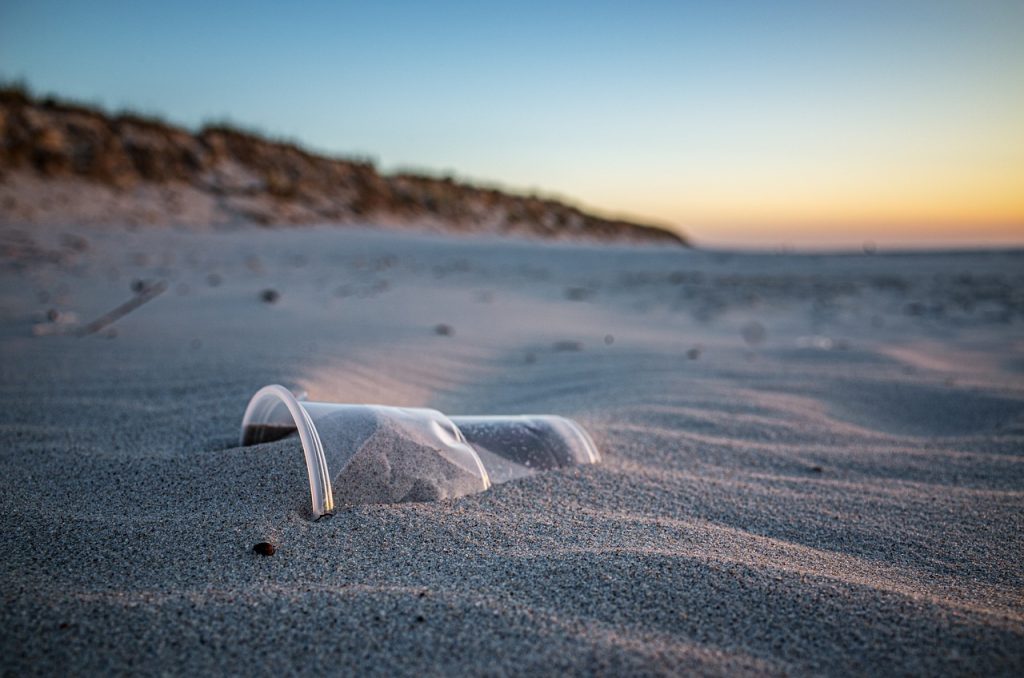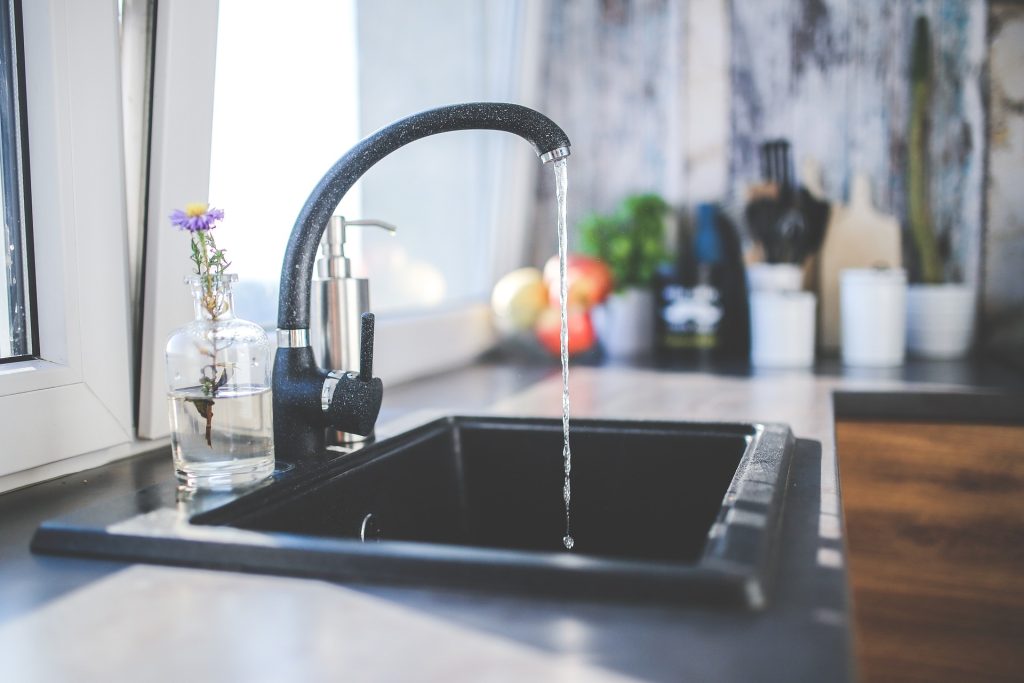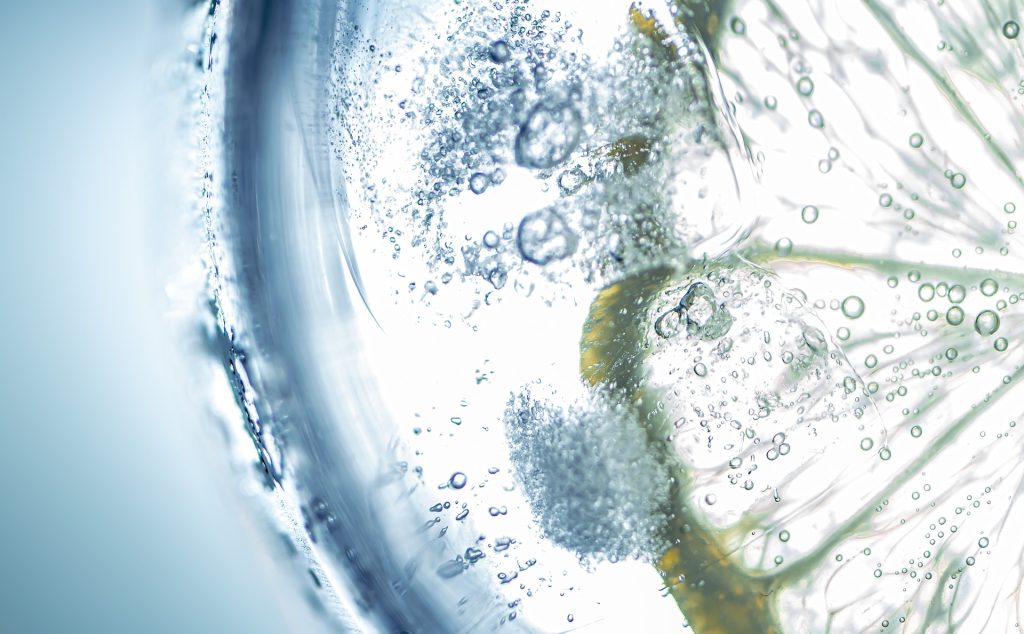
Ever wondered if your tap water is really safe to drink? You’re not alone! Many Aussies are starting to question the quality of their drinking water. Whether it’s the odd taste, a funny smell, or simply a desire for peace of mind, the idea of getting a water filter is becoming more and more appealing.
In this blog post, we’ll dive into the world of water filters and help you decide if getting one is the right choice for you. We’ll cover everything from why you might need a water filter, to understanding the water quality in Australia, and even the different types of filters available. By the end, you’ll have a clear picture of whether a water filter is a good investment for your home.
Clean, safe water is essential for our health and well-being. So, let’s embark on this journey to find out how you can ensure the best quality water for you and your family.
Why Consider a Water Filter?
Let’s face it, tap water doesn’t always taste like a refreshing mountain spring. Sometimes, it has a slightly off taste, an odd smell, or just doesn’t feel quite right. These are some of the reasons why you might start thinking about getting a water filter. But there’s more to it than just taste.
Common Concerns with Tap Water
In many parts of Australia, tap water is treated and generally safe to drink. However, it can still contain various impurities. Common contaminants include chlorine, sediment, heavy metals, and even traces of pesticides. While these might not be at levels considered harmful by health standards, they can affect the taste and quality of your water.
Benefits of Using a Water Filter
Using a water filter can significantly improve the taste and smell of your water. But the benefits go beyond just aesthetics:
- Health: Filters can remove contaminants like lead, chlorine, and bacteria, providing an extra layer of protection.
- Environmental Impact: By filtering your tap water, you reduce the need for bottled water, which cuts down on plastic waste.
- Cost Savings: Over time, using a water filter is much cheaper than constantly buying bottled water.
In essence, considering a water filter is all about peace of mind. Knowing that you’re drinking water that’s been purified of impurities and tastes great can be a huge relief. Plus, the added benefits for your health, wallet, and the planet make it a win-win situation.
Understanding Water Quality in Australia
Australia is known for its high standards when it comes to water quality, but that doesn’t mean every glass of tap water is created equal. Different regions have different water sources and treatment processes, leading to variations in water quality across the country.
Overview of Australian Water Standards and Regulations
Australian tap water must comply with the Australian Drinking Water Guidelines (ADWG), which set stringent standards for the safety and quality of drinking water. These guidelines cover a range of contaminants, including microbial, chemical, and physical hazards. Water utilities regularly test and treat water to ensure it meets these standards before it reaches your tap.
Common Water Contaminants in Different Regions
Even with rigorous testing and treatment, some contaminants can still make their way into your drinking water. Here are a few common ones:
- Chlorine and Chloramines: Used to disinfect water, these chemicals can leave an unpleasant taste and smell.
- Heavy Metals: In some older homes, lead and copper can leach into the water from pipes.
- Microorganisms: While rare, outbreaks of bacteria like E. coli can occur, especially in rural areas.
- Sediments and Particles: Dirt, rust, and other particles can sometimes be found in tap water, particularly in areas with older infrastructure.
For a deeper dive into water quality and how it’s tested, check out this YouTube video on water testing in Australia.
Regional Differences in Water Quality
Water quality can vary significantly depending on where you live. For example:
- Sydney: Generally good water quality, but with a noticeable chlorine taste.
- Perth: Higher levels of minerals like calcium and magnesium, making the water “hard.”
- Adelaide: Historically had issues with salinity and hardness, but improvements have been made in recent years.
Understanding the specific issues in your area can help you determine what kind of water filter might be best for your home. It’s a good idea to start with a water quality report from your local water provider, which can give you detailed information on the contaminants present in your tap water.
Knowing what’s in your water is the first step towards making an informed decision about whether you need a water filter and which type will best meet your needs. Next, we’ll explore the various types of water filters available and how they can tackle these common contaminants.
Types of Water Filters
Choosing the right water filter can feel like navigating a maze with so many options available. To help you make an informed decision, let’s break down the most common types of water filters, their pros and cons, and what each type is best suited for.
1. Activated Carbon Filters
Activated carbon filters are one of the most popular choices for home water filtration. They work by using activated carbon to trap contaminants and impurities.
- Pros:
- Effective at removing chlorine, sediment, and volatile organic compounds (VOCs)
- Improves taste and odour
- Relatively inexpensive
- Easy to install and maintain
- Cons:
- Not effective against heavy metals, fluoride, or microorganisms
- Filter cartridges need regular replacement
- Best For: Households looking to improve the taste and smell of their tap water.
Check out this YouTube video explaining how activated carbon filters work.
2. Reverse Osmosis (RO) Filters
Reverse osmosis filters are highly effective and can remove a wide range of contaminants, including heavy metals and fluoride.
- Pros:
- Removes up to 99% of contaminants, including heavy metals, fluoride, and bacteria
- Produces very clean water
- Cons:
- Expensive to purchase and maintain
- Slow filtration process
- Wastes some water during the filtration process
- Best For: Households concerned about a wide range of contaminants and willing to invest in a comprehensive filtration system.
For a detailed comparison, watch this YouTube video on reverse osmosis vs. other filtration methods.
3. UV (Ultraviolet) Filters
UV filters use ultraviolet light to kill bacteria and viruses, making them an excellent choice for purifying water from biological contaminants.
- Pros:
- Highly effective at killing bacteria and viruses
- Chemical-free
- Easy to maintain
- Cons:
- Does not remove chemical contaminants, sediments, or heavy metals
- Requires electricity to operate
- Best For: Homes relying on well water or in areas with known microbial contamination issues.
4. Ceramic Filters
Ceramic filters use tiny pores in ceramic material to filter out bacteria, sediment, and other particulates.
- Pros:
- Effective against bacteria and sediment
- Long-lasting and durable
- Can be cleaned and reused
- Cons:
- Slow filtration rate
- Not effective against chemical contaminants
- Best For: Areas with sediment-heavy water and those needing basic bacterial filtration.
5. Water Distillers
Distillation involves boiling water and then condensing the steam back into liquid form, leaving most contaminants behind.
- Pros:
- Removes a wide range of contaminants, including heavy metals and most chemicals
- Produces very pure water
- Cons:
- Slow process
- Requires electricity
- Can be expensive
- Best For: Individuals needing exceptionally pure water for specific uses, such as medical or laboratory settings.
Pros and Cons Comparison
Here’s a table summarising the pros and cons of each filter type:
| Filter Type | Pros | Cons | Best For |
|---|---|---|---|
| Activated Carbon | Improves taste and odour, easy to maintain | Not effective against heavy metals | General household use |
| Reverse Osmosis | Removes most contaminants | Expensive, wastes water | Comprehensive filtration needs |
| UV | Kills bacteria and viruses | Requires electricity, no chemical removal | Homes with microbial contamination concerns |
| Ceramic | Effective against bacteria and sediment | Slow filtration, no chemical removal | Areas with sediment-heavy water |
| Water Distillers | Produces very pure water | Slow, requires electricity | Specific uses requiring high purity water |
Choosing the right water filter depends on understanding your specific needs and the quality of your tap water. Now that you’re familiar with the types of filters available, you can make a more informed decision about which one might be right for you. Now let’s discuss how to assess your individual needs and make the best choice for your home.
Assessing Your Needs
So, you’re thinking about getting a water filter, but with so many options out there, how do you choose the right one? The key is to assess your specific needs and priorities. Here’s a guide to help you figure out what you need from a water filter and ensure you make the best choice for your home.
Factors to Consider When Choosing a Water Filter
Water Quality
- Start by understanding the quality of your tap water. Is it generally clean but has an odd taste? Or are you concerned about specific contaminants like lead, chlorine, or bacteria?
- You can obtain a water quality report from your local water provider or use a home water testing kit to identify what’s in your water.
Budget
- Water filters come in a range of prices, from affordable pitcher filters to high-end reverse osmosis systems.
- Consider both the initial cost and the ongoing maintenance costs, such as replacement filters.
Lifestyle and Usage
- Think about your household’s water usage. Do you drink a lot of water, or mainly use it for cooking and coffee?
- If you’re renting, a portable or countertop filter might be more suitable than a whole-house system.
- For families with young children or individuals with health concerns, a more comprehensive filtration system might be worth the investment.
Importance of Water Testing Before Purchasing a Filter
Before you rush out to buy a water filter, it’s essential to know exactly what you’re dealing with. Water testing is a crucial step in determining which contaminants are present in your tap water and what kind of filtration is necessary. Here’s why it matters:
- Accuracy: A water test provides precise information on the contaminants in your water, ensuring you choose a filter that effectively addresses those issues.
- Health and Safety: Understanding your water quality can help you avoid potential health risks and select the right filter to protect your family.
- Cost-Effectiveness: By knowing what you need to filter out, you can avoid overspending on a system that filters more than necessary.
By carefully assessing your water quality, budget, and lifestyle, you’ll be well-equipped to choose the perfect water filter for your home. And remember, knowledge is power! Knowing what’s in your water and what you want from a filter will make the decision process much smoother.
In the next part, we’ll dive into the installation and maintenance of common water filters, ensuring you get the most out of your new system.
Installation and Maintenance
Once you’ve chosen the perfect water filter for your home, the next step is getting it up and running. But don’t worry, installing and maintaining a water filter doesn’t have to be complicated. Here’s a simple guide to help you through the process, ensuring you get the most out of your new system.
Installing Common Types of Water Filters
Activated Carbon Filters
- Pitcher Filters: These are the simplest to set up. Just insert the filter cartridge, fill the pitcher with water, and you’re good to go.
- Faucet-Mounted Filters: Unscrew the aerator from your tap, attach the filter unit, and follow the manufacturer’s instructions to secure it in place.
- Under-Sink Filters: These might require a bit more effort. Typically, you’ll need to connect the filter to your cold water line and mount it under your sink. Detailed instructions are usually provided by the manufacturer.
Reverse Osmosis (RO) Systems
- RO systems usually come with detailed installation manuals. You’ll need to connect the system to your water supply and install a dedicated faucet for filtered water. Some systems also require a drain connection for the wastewater.
- If you’re not comfortable with DIY plumbing, consider hiring a professional to install the system for you.
UV Filters
- UV filters are often installed in conjunction with other filtration systems. You’ll need to connect the UV unit to your water line, ensuring it gets power from an electrical outlet.
- Follow the manufacturer’s instructions to ensure proper installation and maximum effectiveness.
Ceramic Filters
- Countertop ceramic filters are straightforward to set up. Just place the unit on your counter and connect the hose to your faucet.
- For gravity-fed ceramic filters, fill the upper chamber with water and let it filter down into the lower chamber.
Importance of Regular Maintenance and Filter Replacement
Maintaining your water filter is crucial for ensuring it continues to provide clean, safe water. Here’s why regular maintenance matters and some tips on how to keep your filter in top shape:
- Filter Replacement: Over time, filters can become clogged with contaminants, reducing their effectiveness. Check your filter’s manual for recommended replacement intervals, typically every 3-6 months for activated carbon filters and annually for RO membranes.
- Cleaning: Some filters, like ceramic ones, can be cleaned and reused. Regularly clean the filter element as per the manufacturer’s instructions to maintain optimal performance.
- System Check: Periodically inspect your filtration system for any leaks or issues. Make sure all connections are secure and replace any worn-out parts.
Regular maintenance ensures your water filter operates efficiently and extends its lifespan, giving you the best value for your investment. In the next section, we’ll look at the cost considerations of using a water filter versus other water sources.
Cost Considerations
Investing in a water filter can seem like a significant expense upfront, but when you look at the long-term benefits and savings, it often turns out to be a cost-effective choice. Let’s break down the initial costs, ongoing expenses, and compare them to the cost of bottled water.
Initial Cost vs. Long-Term Savings
Initial Cost
- Activated Carbon Filters: These are among the most affordable, with pitcher filters starting at around $30 and faucet-mounted filters ranging from $50 to $100.
- Reverse Osmosis Systems: RO systems can be pricier, with basic units starting around $200 and more comprehensive systems costing up to $600 or more.
- UV Filters: These typically range from $150 to $400, depending on the capacity and additional features.
- Ceramic Filters: Gravity-fed models start around $100, while countertop units can cost between $150 and $300.
Ongoing Maintenance Costs
- Filter Replacements: Replacement cartridges for activated carbon filters usually cost between $10 and $50, depending on the model. RO membranes can cost around $50 to $100, and UV bulbs typically need replacing annually at around $30 to $60.
- Electricity: UV filters and some RO systems require electricity, adding a small amount to your utility bill.
- Cleaning Supplies: For reusable filters like ceramic ones, you’ll need cleaning supplies, but these costs are minimal.
Comparing the Cost of Bottled Water vs. Filtered Water
Bottled Water Costs
- The cost of bottled water can add up quickly. On average, a litre of bottled water costs around $2.50 in Australia. If a household consumes 2 litres per person per day, the monthly cost for a family of four can easily exceed $600.
- Additionally, there’s the environmental cost of plastic waste, which is significant and often overlooked.
Filtered Water Costs
- Using a water filter, the cost per litre of filtered water drops dramatically. For instance, a good quality activated carbon filter can provide clean water for around 10 cents per litre.
- For more comprehensive systems like RO, the cost might be higher initially, but the price per litre still tends to be much lower than bottled water.
Real-Life Cost Analysis
Let’s take a practical look at the costs involved for an average Australian family:
- Bottled Water: If a family of four consumes 8 litres per day, the annual cost can be over $7,000.
- Activated Carbon Filter: With an initial cost of $50 and annual filter replacement costs of $100, the total first-year cost is $150, reducing to $100 annually thereafter.
- Reverse Osmosis System: With an initial cost of $400 and annual maintenance costs of $150, the first-year cost is $550, dropping to $150 annually.
When you factor in the significant savings on bottled water and the environmental benefits of reducing plastic waste, investing in a water filter becomes a clear winner.
By considering both the initial costs and long-term savings, it’s evident that water filters are not only a healthier and more sustainable choice but also a more economical one.
Now we’ll explore the positive environmental impact of using water filters and how you can contribute to a greener planet.
Environmental Impact
In today’s world, being environmentally conscious is more important than ever. By choosing to use a water filter instead of relying on bottled water, you’re making a positive impact on the planet. Let’s explore how water filters help reduce plastic waste and their overall environmental benefits.

How Using a Water Filter Reduces Plastic Waste
1. Reducing Single-Use Plastics
- Australia is one of the world’s largest consumers of bottled water, with millions of bottles being discarded each year. Most of these bottles are made from single-use plastic, which takes hundreds of years to decompose.
- By using a water filter, you can significantly reduce your reliance on bottled water, cutting down on the number of plastic bottles that end up in landfills and oceans.
2. Reusable Containers
- Investing in a good-quality reusable water bottle complements the use of a home water filter. You can fill up your bottle with filtered water before heading out, reducing the need to purchase bottled water on the go.
- This simple switch not only saves money but also helps to keep plastic out of the environment.
Positive Environmental Impact of Using Reusable Filters
1. Lower Carbon Footprint
- The production and transportation of bottled water require substantial amounts of energy and resources, contributing to greenhouse gas emissions. By filtering your tap water at home, you’re cutting down on the carbon footprint associated with bottled water.
- Water filters, especially those with replaceable cartridges, use significantly fewer resources over their lifetime compared to the production of bottled water.
2. Waste Reduction
- Many water filter systems have recyclable parts. For instance, some companies offer recycling programs for used filter cartridges, ensuring they are disposed of responsibly.
- Ceramic filters and other durable filter types have long lifespans and can be cleaned and reused, further reducing waste.
For a deeper understanding of how switching to water filters can help reduce plastic waste, check out this insightful study on plastic waste reduction.
Real-Life Impact
Consider the story of Emma from Brisbane. After switching to a home water filter system, she drastically reduced her household’s plastic waste. Emma estimates that her family of four has saved around 1,500 plastic bottles per year by using filtered water and reusable bottles. The environmental benefits don’t stop at reducing plastic waste; they also include lowering their overall carbon footprint and contributing to a healthier planet.

Choosing a water filter over bottled water is a simple yet powerful way to contribute to environmental conservation. Not only does it help reduce plastic waste and lower your carbon footprint, but it also promotes sustainable living practices. By making this switch, you’re playing a part in protecting our beautiful planet for future generations.
Conclusion
We’ve covered a lot of ground in this blog post, from understanding why you might need a water filter to exploring different types and assessing your needs. Now, let’s bring it all together and help you make an informed decision about whether a water filter is right for you.
Recap of Key Points
- Why Consider a Water Filter?
- Water filters improve the taste and smell of tap water and can remove contaminants like chlorine, sediment, and heavy metals. They offer health benefits, environmental advantages, and long-term cost savings.
- Understanding Water Quality in Australia
- While Australia has high water quality standards, regional differences and common contaminants like chlorine and heavy metals make water filters a beneficial addition to many households.
- Types of Water Filters
- There are various water filter types, including activated carbon, reverse osmosis, UV, ceramic, and water distillers. Each type has its own strengths and is suited to different needs and budgets.
- Assessing Your Needs
- Consider factors like water quality, budget, lifestyle, and specific contaminants when choosing a water filter. Water testing is crucial to determine what needs filtering out.
- Installation and Maintenance
- Water filters are generally easy to install and maintain. Regular filter replacement and cleaning ensure optimal performance and longevity.
- Cost Considerations
- Although the initial cost of water filters can be high, they offer significant long-term savings compared to bottled water, making them a cost-effective option.
- Environmental Impact
- Using a water filter reduces plastic waste, lowers your carbon footprint, and promotes sustainable living practices. It’s a small change that makes a big difference.
Ultimately, the decision to get a water filter comes down to your individual needs and priorities. Think about what matters most to you and your family. Are you concerned about the taste of your tap water? Do you want to reduce plastic waste and make an environmentally friendly choice? Are there specific contaminants in your water supply that you want to remove?
Additional Resources
Choice Australia: They often review and compare various household products, including water filters, providing insights into performance, cost, and consumer reviews.
Australian Government Water Quality Guidelines: These guidelines provide information on water quality standards in Australia, helping consumers understand what contaminants are present in their local water supply.
Your local water utility: Many water utilities in Australia offer information on water quality reports and may even provide recommendations on water filters suitable for local conditions.
Cost Comparison Calculators: Websites like Canstar Blue or Finder Australia often have tools that allow consumers to compare the costs of bottled water versus filtered water over time, helping them make an informed financial decision.
These resources not only provide valuable information but also empower consumers to make choices that best suit their needs and budget when considering water filters in Australia.


